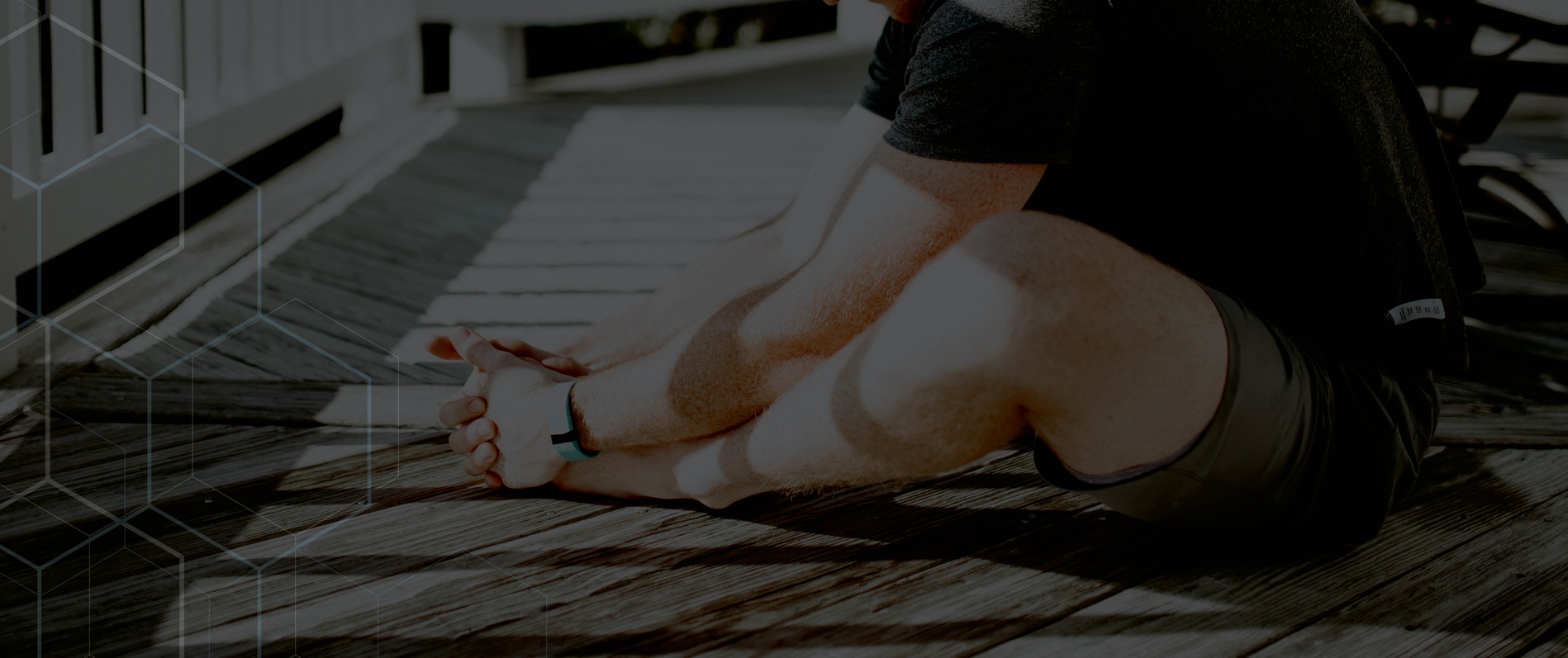
LOW BACK EXERCISES
Session 3
Session #3 begins by repeating the soft tissue series A from session #1. Ideally, you have broken down some scar tissue and adhesions since the last time you addressed these areas, so you should be feeling slightly less soreness this time through.
You will progress to a new set of stretches, Flexibility C, in today’s flexibility segment as you address some of the same areas that were targeted in soft tissue work. You will assume a half kneeling position with 1 foot forward and 1 knee down for the quadriceps stretch. The closer you position yourself the surface that your back foot is up against, the more stretch you will produce on the quadriceps. They key is to maintain a chest-up position to maximize the stretch. You will then transition into an adductor (groin) stretch from the half kneeling position with 1 leg out wide to be stretched. This position should be manipulated to achieve the best stretch on the groin. The pecs will be stretched by laying supine on a stability ball with the arms outstretched in a “Y” position. Finally, the shoulder will be stretched by crossing the arm across the body.
As you move on to the mobility drills, you will perform the linear ankle wall mob for the last time before progressing to a new ankle mobility drill in session #4. For the hip, you will repeat the 2 drills from session #1, which were the lying psoas march and lying knee to knee. Ideally, you will experience more psoas activity and hip range of motion both through flexion and rotation than you did in session #1. You will progress to 2 new thoracic mobility drills in today’s session. For the diamond slide, you will lie on your back with your shoulder blades depressed back and down and arms in a “W” position. The objective is to slide your arms to an overhead position while maintain scapular positioning and contact with the floor. Your second thoracic mobility drill will emphasize rotation from a quadruped position. Employ the draw-in fundamentals you learned during the initial sessions to brace the core and isolate movement through the thoracic spine.
For your first activation exercise you advance beyond using the bench and perform the bent-knee hip extension from a free-standing quadruped position. Now you will have to stabilize your spine while promoting hip extension without the aid of the bench. Next, you will perform a front plank. You should set your shoulder blades in the back and down position while activating the core to achieve neutral spine and the glutes to maintain hip extension in the plank. The head should hold a neutral position. The doorway slide will follow which is a progression from the forearm wall slide. You will abduct your shoulders to use the doorway frame and activate the serratus anterior, promoting better scapular elevation. Next, you will transition to a seated position and work to activate the psoas, which is the hip flexor muscle that promotes flexion above 90 degrees. The key is to hold posture while flexing the hip and not allow any compensation patterns. The cable/band horizontal retraction will be performed to train scapular retraction and promote better posture. And, the hurdle walk with a pause will draw upon the movement fundamentals of the seated psoas and also address single leg stability. Moving from a bilateral stance to a single leg stance should immediately turn on core and hip stabilizers that were not active in a bilateral stance.
Your first strength training movement is a dumbbell shoulder press from a tall kneeling position to integrate activity. Posture and shoulder mechanics are keys to making this a safe and productive movement. The “filler” behind this movement is the horizontal retraction to emphasize the contribution of scapular stabilizers in posture. Next, you will progress from the stability ball-aided squat to a free standing body weight squat with a touchdown on an object behind you to emphasize hip flexion. The seated psoas hold “filler” will follow as you continue to promote increased hip mobility through improved psoas activity. Your third exercise will resemble the pulling movement you performed in session #1, only this time you will execute the low row from a half kneeling position instead of a tall kneeling position. This will cause a little more instability and force you to resolve that through concentrated core and glute activity in addition to sound posture. Thoracic mobility will be enhanced afterward as you perform the quad t-spine rotation as a “filler”. For your hip dominant movement, you will progress from the bilateral hip lift in session #2 and move to a single leg hip lift. Continue to work through your heel in this movement to maximize glute activity. This will be followed by a front plank “filler” to emphasize core stabilization among other variables.
Your session will conclude with Exit Work as you choose 1 or more components of your Prep Work and repeat the process to emphasize clean movements once again.